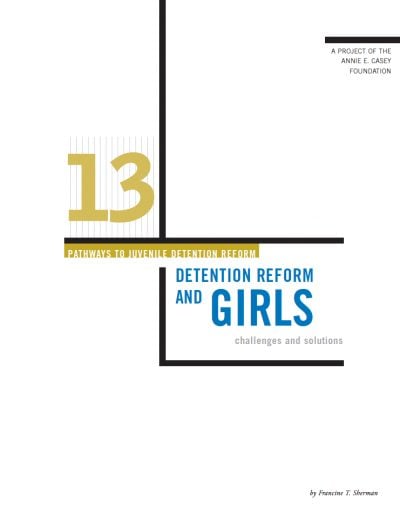Fact:
Detention centers were largely designed to serve boys—and only boys.

This report, the 13th installment in a series devoted to revolutionizing detention programs and practices in America, champions a charge to eliminate unnecessary confinement for girls while treating them like…girls. And individuals. And—as the law requires—the equals of boys. The lessons stem from Casey's Juvenile Detention Alternatives Initiative (JDAI).
Research suggests as much. A growing number of girls are being arrested for minor offenses and spending more time in detention—sometimes nearly twice as long—relative to their male counterparts. Even worse, say experts, is that these stays can reignite past trauma and health problems while leaving the girls feeling powerless and confused.
This report shares lessons learned from a multiyear, multisite project conducted by the Annie E. Casey Foundation. Called the Juvenile Detention Alternatives Initiative, this project aims to do just what its name suggests: Identify more effective, efficient alternatives to juvenile detention.
We hope you'll find value in this report. We’d love to get a little information from you, which we'll use to notify you about relevant new resources.